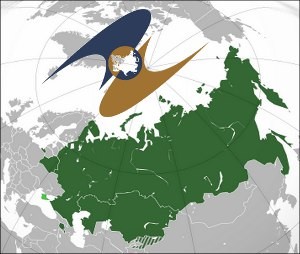BISHKEK (TCA) — Chinese investors show the strongest dynamics of foreign direct investment (FDI) in the Eurasian Economic Union (EEU) countries (Armenia, Belarus, Kazakhstan, Kyrgyzstan, and Russia). Between 2008 and 2014, China’s FDI stock in the region more than doubled, from $11 billion to $27.1 billion. Over the same period, Japanese FDI reached $14.4 billion and South Korean FDI reached $1.9 billion, according to the report “EEU and Eurasia: Monitoring and Analysis of Direct Investments”, prepared by Eurasian Development Bank’s (EDB) Centre for Integration Studies.
Chinese FDI is primarily concentrated in Kazakhstan, and Japanese in Russia. In terms of sectoral structure, Japanese and Chinese investors primarily focus on raw material resources of the EEU countries.
In 2014, Chinese FDI stock in hydrocarbon production in Kazakhstan reached $17.1 billion. Kazakhstan’s transport sector attracted $6.2 billion in FDI from China. Investments by Chinese trans-national corporations (TNCs) in Russian oil and gas sector amounted to $1.2 billion, the report said.
Japanese and South Korean corporations are significantly interested in the EEU mechanical engineering sector ($2 billion in FDI stock). South Korean FDI focuses on motor vehicles and electronics, expecting to export their output to other post-Soviet countries.
Iran continues to increase its investments in the EEU countries at low yet stable rates. The main recipient of its FDI is Belarus (commercial construction and development). As at the end of 2014, Iranian FDI stock in Belarusian economy was $731 million ($64 million as at the end of 2008). The prevailing sector in the sectoral breakdown of Iran’s FDI in the EEU countries is construction, followed by infrastructure networks and transportation. According to the EDB Centre for Integration Studies, Iranian FDI stock in the surveyed post-Soviet countries is more than 90 times higher than counter-investment in Iran ($966 billion vs. $10 million).
Turkish FDI in EEU countries is distributed by sectors more uniformly. It is represented across all aggregated sectors, except non-ferrous metals and oil and gas sector. Turkish FDIs in the EEU region as at the beginning of 2015 totalled $7.9 billion. Russia’s share in Turkish FDI in EEU was 72.5%, Belarus’ 13%, and Kazakhstan’s 10.8%.
Indian FDI in the EEU is distributed between two countries only: Russia ($3.6 billion) and Kazakhstan ($2.3 billion). Other EEU economies are of low interest to Indian TNCs for the time being. Two sectors – ferrous metals (FDI in Kazakhstan) and oil and gas sector (primarily, through ONGC’s participation in Sakhalin-1 project) – dominate in the sectoral breakdown.
Despite low growth rates in the global economy, as well as volatility and uncertainty in financial markets, the investment expansion by Asian countries in the EEU economies has not suspended. The experts of the EDB Centre for Integration Studies believe that Asian FDI in EEU countries will continue to grow. The main role will be played by Chinese investors, which try to give effect to memoranda and preliminary agreements entered into in 2014-2015 and thereby to increase their expansion in a wide range of directions. Japanese companies will try to occupy free niches in Central Asia, where competition among transnational corporations is still low. Iranian investors will continue to strengthen their investments.

